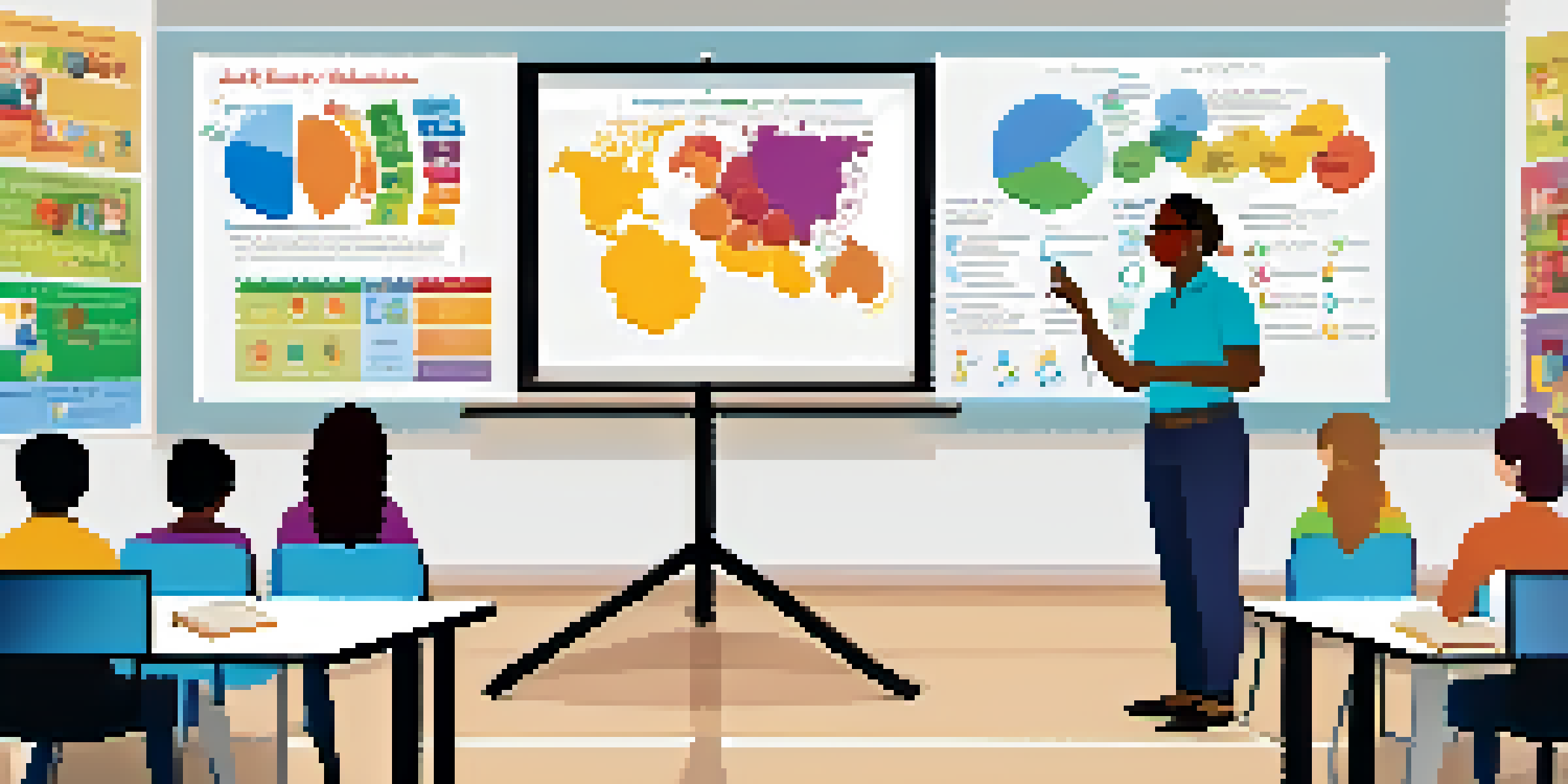Assessing Learning Progression Through Competency-Based Models

Understanding Competency-Based Learning Models
Competency-based learning models focus on developing specific skills and knowledge rather than just completing courses. This approach allows learners to progress at their own pace, ensuring they truly understand and can apply what they’ve learned. Imagine learning to ride a bike; you wouldn't move on until you can balance and pedal confidently, right? Similarly, these models prioritize mastery over time spent in class.
The only way to do great work is to love what you do.
In essence, competency-based education breaks down learning into manageable units, often referred to as competencies. Each competency represents a measurable skill or knowledge area that learners must master before advancing. This structure not only clarifies expectations for students but also provides educators with a clear framework for assessment.
Ultimately, competency-based models empower learners to take ownership of their education. By focusing on individual skills, students can tailor their learning experiences, making education more relevant and engaging. This personalized approach is akin to choosing your own adventure, where you select the skills you want to develop and the pace at which you want to progress.
The Importance of Assessing Learning Progression
Assessing learning progression is crucial for understanding how well students are grasping competencies. Without regular assessments, educators may miss key insights into a learner’s strengths and areas for improvement. This is similar to checking the temperature of a dish while cooking; without tasting, you can't adjust the flavor to perfection.

Regular assessments provide feedback for both students and teachers, creating a dialogue about progress and expectations. For instance, a student may excel in one competency but struggle in another, prompting targeted support. This ongoing reflection helps ensure that no student is left behind, fostering a supportive learning environment.
Focus on Mastery Over Time
Competency-based learning models prioritize skill mastery, allowing learners to progress at their own pace.
Moreover, assessing progression allows for adjustments to teaching strategies and materials. If a significant number of students are struggling with a particular competency, it’s a signal that the instructional approach may need reevaluation. This continuous loop of assessment and adjustment is key to creating effective learning experiences.
Key Components of Competency-Based Assessments
Competency-based assessments typically include a variety of evaluation methods to gauge learner understanding. These methods can range from traditional tests to project-based assessments, allowing students to demonstrate their skills in multiple ways. Think of it as a concert where musicians showcase their talents in different styles, ensuring a well-rounded performance.
Education is not the filling of a pail, but the lighting of a fire.
Incorporating formative assessments—those that occur during the learning process—can be particularly effective. These assessments provide timely feedback and help students identify their own learning gaps. For example, a student might complete a draft of a project and receive input before the final submission, improving their work significantly.
Additionally, summative assessments at the end of a learning unit confirm mastery of competencies. These assessments serve as a final check, ensuring that learners have indeed acquired the necessary skills before moving on. Just like a final exam that determines if you’re ready for the next level, these evaluations are essential for maintaining academic integrity.
The Role of Technology in Competency Assessment
Technology plays a pivotal role in enhancing competency-based assessments, making them more efficient and accessible. Online platforms can track student progress in real-time, allowing for instant feedback and adjustments as needed. Imagine a fitness app that logs your workouts and suggests improvements; it's the same concept but applied to learning.
Moreover, digital tools can facilitate personalized learning paths tailored to each student’s needs. Using algorithms, these platforms can recommend specific resources or activities based on a learner’s performance. This adaptability ensures that learners receive support precisely when they need it, much like a GPS recalculating your route during a road trip.
Regular Assessments Enhance Learning
Ongoing assessments provide valuable feedback, helping educators tailor support to individual student needs.
Finally, technology enables educators to analyze data trends across cohorts, enhancing instructional decisions. By examining overall performance metrics, teachers can identify which competencies are consistently challenging for students. This data-driven approach allows for more strategic curriculum development, ultimately benefiting the entire learning community.
Challenges in Implementing Competency-Based Models
While competency-based models offer numerous benefits, implementing them is not without challenges. One significant hurdle is the need for educators to shift their mindset from traditional teaching methods to a more flexible, individualized approach. This transition can be daunting, akin to switching from a manual to an automatic car; it requires a new set of skills and understanding.
Another challenge lies in designing assessments that accurately measure competencies. Developing clear, consistent criteria for evaluation can be complex, especially when dealing with diverse learning styles and backgrounds. This complexity is similar to creating a recipe that everyone enjoys; it takes careful thought to balance flavors and preferences.
Lastly, ensuring that all stakeholders—students, parents, and educators—understand and support the competency-based model is crucial. Effective communication and training are essential to foster buy-in and collaboration. Just as a team works together towards a common goal, the success of these models relies on collective effort and understanding.
Best Practices for Competency-Based Assessment
To effectively implement competency-based assessments, educators should start by clearly defining competencies for each subject or skill area. This clarity provides a roadmap for both teaching and assessment, ensuring everyone is aligned on expectations. Think of it like setting a destination before beginning a journey; it guides all subsequent steps.
Incorporating student voice into the assessment process can also enhance engagement and ownership. Allowing learners to reflect on their progress and set personal goals fosters a sense of responsibility and motivation. This partnership in learning is akin to co-pilots navigating a plane together, each contributing to the flight's success.
Technology Transforms Learning Paths
Digital tools enable personalized learning experiences and data-driven insights for more effective teaching.
Lastly, regular professional development for educators is vital for maintaining effective practices. Continuous training ensures that teachers are well-equipped to implement competency-based models and adapt to emerging challenges. Just like any craft, honing teaching skills is a lifelong journey that yields greater rewards with time and dedication.
Future Trends in Competency-Based Education
As education continues to evolve, competency-based models are likely to gain even more traction. The push for personalized learning experiences is growing, aligning perfectly with the principles of competency-based education. Picture a future where every learner’s path is uniquely designed to suit their goals and interests, creating a more engaged and motivated student body.
Emerging technologies, such as artificial intelligence and machine learning, are set to revolutionize the assessment landscape. These tools can analyze data patterns and provide insights that help educators refine their teaching methods. Just as smart home devices anticipate your needs, AI in education can tailor learning experiences to better suit individual learners.

Finally, the growing emphasis on skills-based hiring in the workforce underscores the importance of competency-based education. As employers seek candidates with demonstrable skills rather than just degrees, educational institutions must adapt to meet these demands. This alignment between education and the job market ensures learners are well-prepared for their future careers.